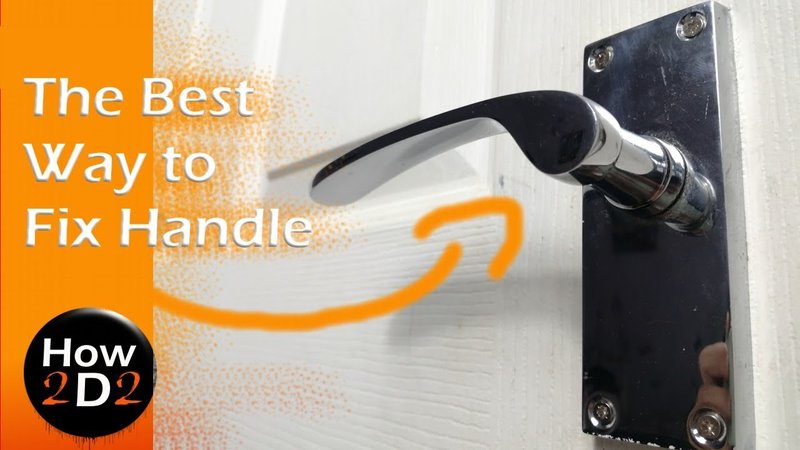
Think of an interior door knob like a simple puzzle. Sometimes, all it needs is a little adjustment or a tiny part replaced to work smoothly again. Whether it’s a privacy knob on a bathroom door or a passage knob on a bedroom door, understanding how these mechanisms work can make the fixing process easier. Let’s dive into some common causes and solutions for door knobs that lock themselves.
Understanding How Door Knobs Work
Before we jump into troubleshooting, it helps to know what’s happening inside that door knob. Most interior door knobs operate on a simple latch mechanism that allows you to lock and unlock as needed. When you turn the knob, a bolt moves in and out of the door frame, securing or releasing the door.
You might be wondering why this matters. When a door knob locks itself, it usually means something in that latch mechanism isn’t functioning properly. Possible causes include wear and tear, dirt buildup, or misalignment. Recognizing these issues gives you a good start toward solving the problem.
Let’s break this down further. Most door knobs have:
- A key cylinder: For keyed locks, this is where you insert your key.
- A thumb turn: This allows you to lock or unlock the door from the inside.
- The latch bolt: This is the part that secures the door in place.
- The strike plate: This is what the bolt locks into when the door is closed.
Common Causes of Self-Locking Door Knobs
Now that we understand how door knobs function, let’s look at why they might lock themselves. It’s often one of these main culprits:
1. Misalignment: Over time, doors can sag or shift due to environmental changes. If the door isn’t aligned with the strike plate, the bolt might not retract correctly, locking the knob unexpectedly.
2. Dirt and Debris: Dirt buildup in the latch mechanism can cause it to jam, leading to a self-locking issue. It’s like trying to ride a bike with a flat tire—without proper maintenance, it won’t function smoothly.
3. Worn Out Parts: If you’ve had your door knob for years, the internal components may wear down, leading to malfunction. Think of it as an old car that needs a tune-up; sometimes, parts just need to be replaced.
4. Faulty Installation: If a door knob was installed incorrectly, it can lead to various issues, including self-locking. This is more likely if you’ve recently replaced the knob or done renovations.
Identifying the cause is half the battle. Once you know what’s going on, you can move on to the fix.
Steps to Fix a Self-Locking Door Knob
So, how do you go about fixing a door knob that locks itself? Here’s a straightforward guide to get you started.
1. Gather Your Tools
First things first: gather your tools. You’ll usually need:
- Flat-head screwdriver
- Phillips screwdriver
- Lubricant (like WD-40)
- Replacement parts (if needed)
Having everything on hand will make the process smoother.
2. Inspect the Door and Knob
Next, examine the door and door knob closely. Look for gaps between the door and the frame, or see if the knob feels loose. Check the alignment with the strike plate, too.
If you notice any misalignment, try adjusting the hinges by tightening screws or adding shims. This can help realign the door without much hassle.
3. Clean the Mechanism
If dirt is the issue, cleaning it can do wonders. Start by taking the knob apart. Most knobs can be removed by unscrewing a couple of screws. Once off, use a cloth or brush to remove dirt from the latch mechanism.
After cleaning, apply a bit of lubricant to ensure smooth operation. Just like oiling a squeaky hinge, this little step can make a big difference.
4. Replace Worn Parts
If the knob still locks itself after cleaning and adjusting, you might need to replace worn parts. Check for any broken springs or latches. You can usually find replacement parts at local hardware stores or online.
Installing new parts is often as simple as reversing the removal process. Follow the manufacturer’s instructions if you have them — it’ll save you some guesswork.
Preventing Future Issues
Once you’ve got your door knob fixed, you’ll want to keep it functioning well. Regular maintenance goes a long way in preventing future problems. Here are a few tips:
- Keep it clean: Regularly wipe down the knob and mechanism to avoid dirt buildup.
- Check alignment: Periodically check that the door is properly aligned and adjust as needed.
- Lubricate: Apply lubricant every so often. This keeps the moving parts working smoothly.
Taking these small steps can save you from a future headache of a door knob that locks itself again.
When to Call a Professional
Sometimes, despite your best efforts, a door knob issue might be beyond a simple fix. If you’ve tried all the steps above and the knob still locks itself, it might be time to call in a professional.
There are a few signs that suggest it’s time for expert help:
- If the door knob feels damaged beyond repair.
- If you’re uncomfortable with DIY repairs or lack the right tools.
- If there are other door issues (like frame damage) that you can’t resolve.
A professional locksmith can assess the situation and help you determine the best course of action.
Fixing an interior door knob that locks itself isn’t as daunting as it may seem. With a little patience, the right tools, and a clear understanding of how your door knob works, you can troubleshoot and resolve the issue. Whether it’s a simple cleaning or a parts replacement, taking action can extend the life of your door knob and enhance your home’s security.
So the next time your door knob acts up, remember this guide. You’ve got the tools and knowledge to tackle it head-on. Happy fixing!
